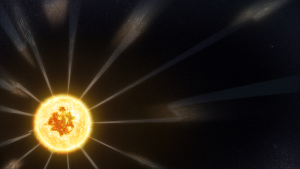Researchers using Parker Solar Probe data released a new wave of research papers in a special supplement of The Astrophysical Journal on Feb. 3, 2020. The supplement, titled Early Results from Parker Solar Probe: Ushering a New Frontier in Space Exploration, includes some 47 papers with new findings based on the mission’s first three solar flybys. Several other papers still under review will be published later as part of this same issue. The introduction for the issue was written by Marcia Neugebauer, who first confirmed the existence of the solar wind after it was predicted by Eugene Parker — namesake of Parker Solar Probe — in 1958.
The new research builds upon initial results released in Nature and discussed at the American Geophysical Union meeting in December 2019.
A few highlights include:

- New analysis of the magnetic switchbacks first discovered by Parker Solar Probe and described in Nature in Dec. 2019 (Dudok de Wit, et al)
- Detailed studies of the slow solar wind, the origins of which are still uncertain, using Parker Solar Probe and other NASA and ESA spacecraft (Rouillard, et al)
- New observations of a coronal mass ejection, observed close to the Sun by Parker Solar Probe and from afar by other NASA missions (Wood, et al)
- Close measurements of an energetic particle event by Parker Solar Probe and other NASA spacecraft (Leske, et al)
Read coverage of additional research from University of New Hampshire, Queen Mary University of London, the University of Alabama in Huntsville and Southwest Research Institute.
